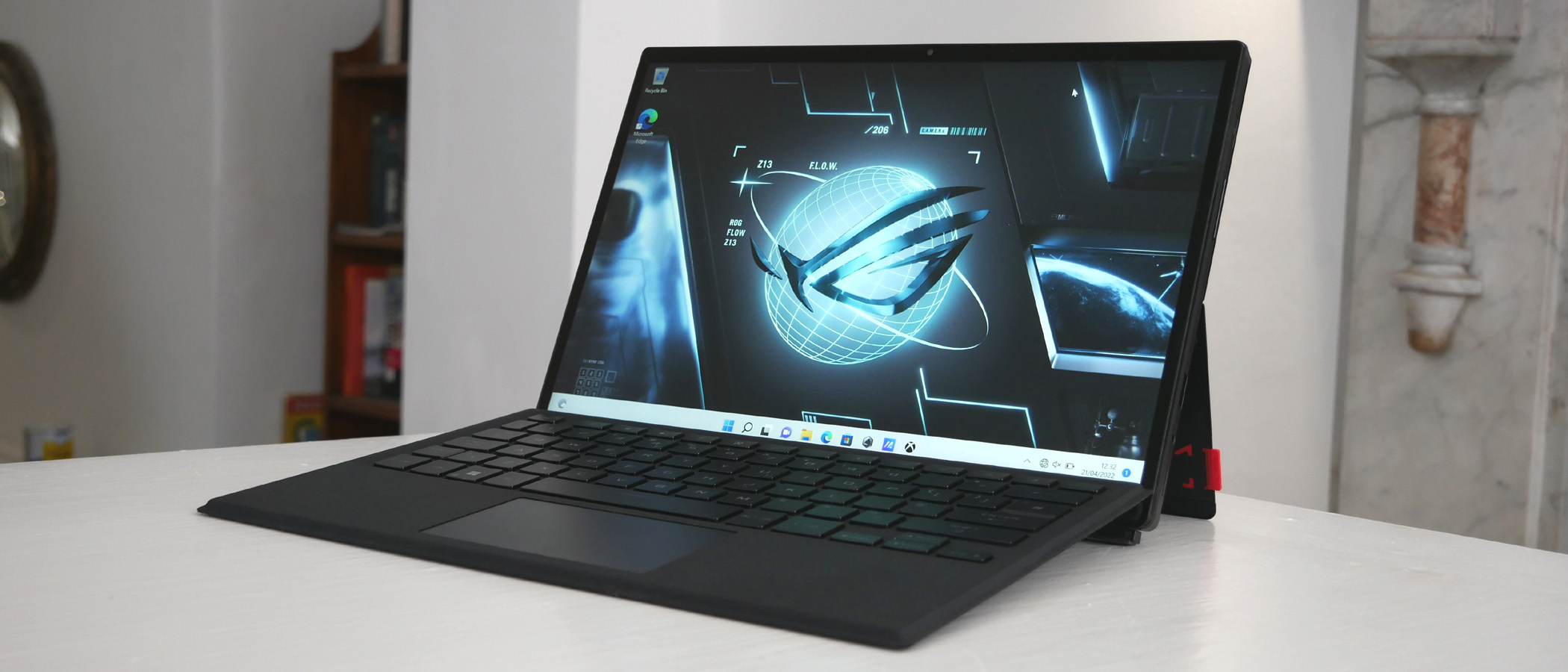Our Verdict
The Asus ROG Flow Z13 is an astonishing technical achievement, but is also undeniably flawed. Cramming an Intel Core i9-12900H 14-core CPU and RTX 3050 Ti graphics into a tablet PC is completely crazy, for both better and worse. It makes for a remarkably powerful tablet and yet the 12900H processor in particular simply can’t give its best in such a confined space. As for the ROG XG Mobile graphics dock and its Nvidia RTX 3080 graphics, it’s a similar story. As impressive as it is that the whole ensemble actually works, ergonomically it's a bit of a mess, the physical connection feels fragile and the performance isn’t on par with a good laptop with similar components, let alone a desktop. There's still real appeal here for certain very specific workflows, but it's squeezed into an uncomfortably narrow niche.
For
- Staggering performance for a tablet PC
- Mostly fabulous build quality
- Stellar feature set
Against
- Ergonomically a bit of a mess
- ROG XG Mobile connection feels fragile
- An expensive route to high performance
Why you can trust Creative Bloq
Where to begin with the extraordinary new Asus ROG Flow Z13 and its ROG XG Mobile RTX 3080 sidekick graphics box? This is a tablet PC unlike any other. It’s absolutely rammed with high spec components, including no fewer than three GPUs in this configuration.
To that you can add a 14-core Intel 12th Gen CPU, 1TB SSD, 16GB of DDR5 memory, CNC milled aluminium chassis, vapour chamber cooling with liquid metal and a clip-on keyboard with RGB lighting. Yes, all in a tablet. But the really exceptional bit is that triple-graphics config. You get one integrated GPU in the Intel processor, a dedicated laptop GPU in the tablet itself and then yet another in the external ROG XG Mobile box, the latter being a beefy Nvidia GeForce RTX 3080 mobile chip.
CPU: Intel Core i9-12900H (14-core)
Graphics: Intel Iris Xe, Nvidia RTX 3050 Ti, Nvidia RTX 3080
RAM: 16GB
Screen: 13.4-inch, UHD+, IPS LCD
Storage: 1TBB SSD
Ports: 1x USB Type-C, 1 x USB 3.1, SD card, 3.5mm audio jack
Size: 30.2 x 20.4 x 1.2 cm (W x H x D)
Weight: 1.18 kg
Crazy? Yes, Stupid? On the contrary, the ROG XG Mobile cleverly doubles as a power supply and expansion dock with an array of ports. There really is nothing quite like it among existing tablet PCs. As slick as Microsoft’s Surface Pro 8 is, for instance, it’s a very different proposition. The same applies to high performance laptops like the Razer Blade 15. Indeed, this tablet's closest competitor is Asus’s own ROG Flow X13, a 2-in-1 laptop that is also compatible with the XG Mobile box. Both of the Asus siblings promise everything from excellent gaming performance to touch-enhanced content creation capabilities. Time to find out if the Z13 actually delivers as one of the best gaming laptops out there.
Asus ROG Flow Z13 review: Features and design
For the Asus ROG Flow Z13 to make sense, it has to work well as a conventional tablet computer. Immediately, it’s obvious compromises have been made to cram in the high power components into a 13.4-inch chassis.
It's hard to believe, but this tablet PC contains none other than Intel’s Core i9-12900H, all 14 cores and 20 thread’s worth of 12th Gen processing muscle. In theory, that’s a chip good for 5GHz and incredible computational power. As reviewed here, it's complemented by 16GB of DDR5 memory, a 1TB SSD from Micron and an Nvidia GeForce RTX 3050 TI graphics chip with 4GB of its own memory.
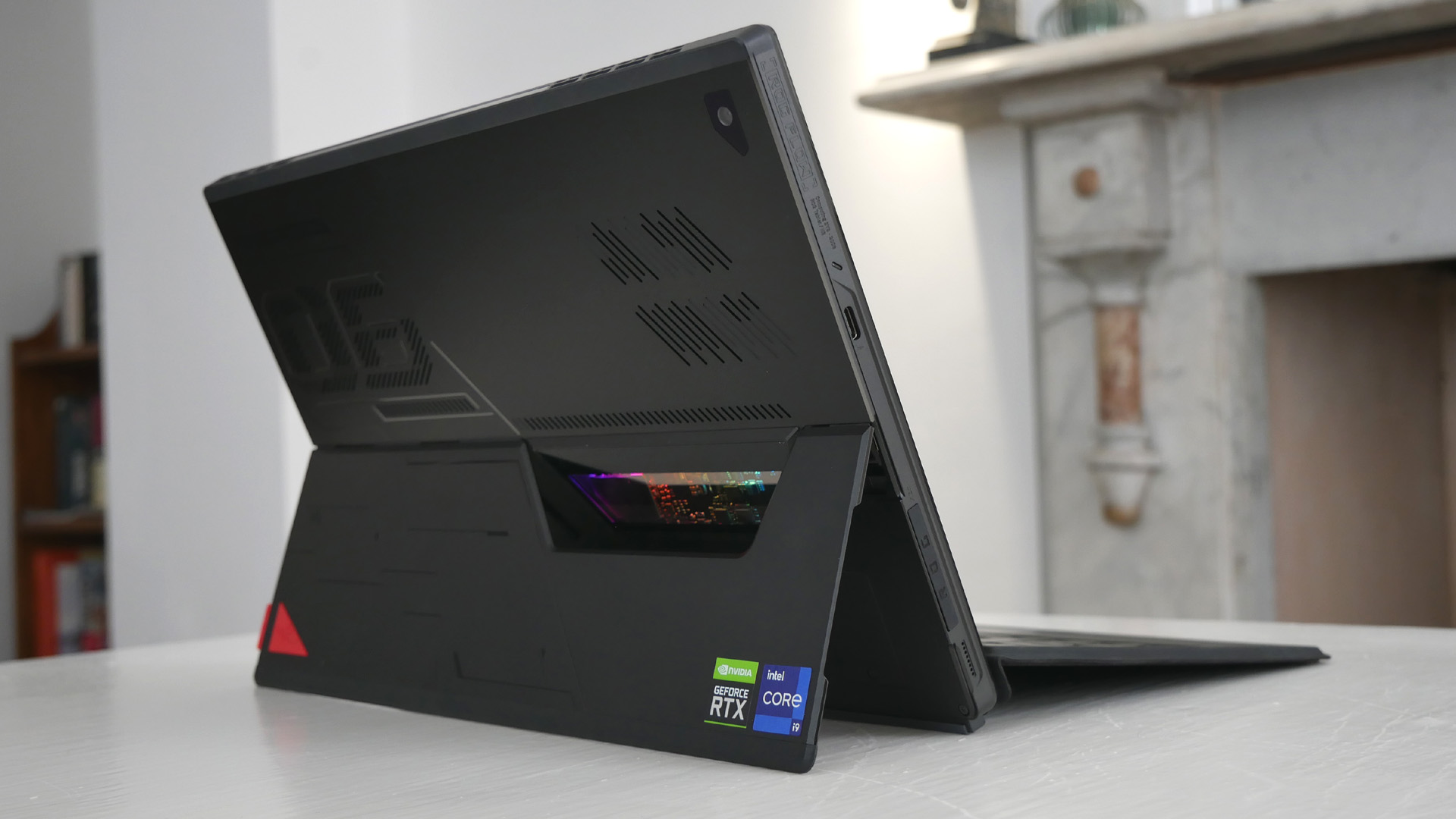
This is incredible, and only possible with a chassis that’s a fair bit thicker than most tablets at 1.2cm. It's thicker still with the bundled clip-on chicklet style keyboard that clips magnetically to the base of the chassis. Still, with fairly slim bezels around the 13.4-inch display, the Flow Z13 has a reasonably compact overall footprint.
The chassis itself is a thing of material beauty, precision milled as it is from high-density aluminium and sporting a nifty little RGB-lit window, which gives a tantalising glimpse of the tech inside. The sturdy 170-degree kickstand, meanwhile, allows for a wide-range of viewing and input configurations. So, it’s great for use on desks and tables, albeit less so for the traditional on-lap usage model at which few, if any, tablets excel.
For connectivity, you get one USB-C port with Thunderbolt support, one USB-A socket, an SD card reader, headphone jack and the ROG XG Mobile Interface which we'll come to momentarily. All told, the Flow is very heavy for a tablet device at 1.18kg. That, by way of example, is nearly double the heft of Apple’s beefiest 12.9-inch iPad Pro. For extensive handheld operation, that kind of mass gets old pretty quickly. As for the 13.4-inch display, it’s an IPS panel with a fairly epic 3,840 by 2,400 pixel resolution and 60Hz refresh.

So far, this is certainly a beast of a tablet. But it’s just a tablet. Until, that is, you hook up the ROG XG Mobile box. It then enters an entirely new class of both performance and device.The box plugs into a proprietary socket of the Flow tablet covered by a small removable rubber cover that would be all too easy to lose. The socket itself is also quite fiddly and feels fragile enough to be a long-term worry re. reliability. Ergonomically, the tablet and box make for a pretty convoluted setup, too. It’s not easy to get the whole thing looking neat and tidy.
For our review, this external graphics box packs an RTX 3080 mobile GPU that connects via an eight-lane PCIe Gen 3 interface. The box also includes an I/O hub with USB, video ports and an SD card reader, plus a 280W power supply. In other words, you don’t need to use the tablet’s smaller 100W power adapter when the GPU box is plugged on.
Asus ROG Flow Z13: price
At $3,299 / £2,999 in the configuration reviewed here, the Asus ROG Flow Z13 and its ROG XG Mobile RTX 3080 sidekick are obviously not cheap. But neither is a laptop powered by similar components. if you want this class of performance, you're going to have to pay for it.
By way of example, The Razer Blade 15 with slightly inferior graphics and CPU starts at $2,999 / £2,499. Match or better the Flow's specs and you're looking at over $4,000 / £4,000. In that context, the value proposition isn't actually too bad. But in pure performance terms, your money would obviously be better spent on a conventional desktop. Squeezing powerful components into ultramobile form factors always costs plenty.
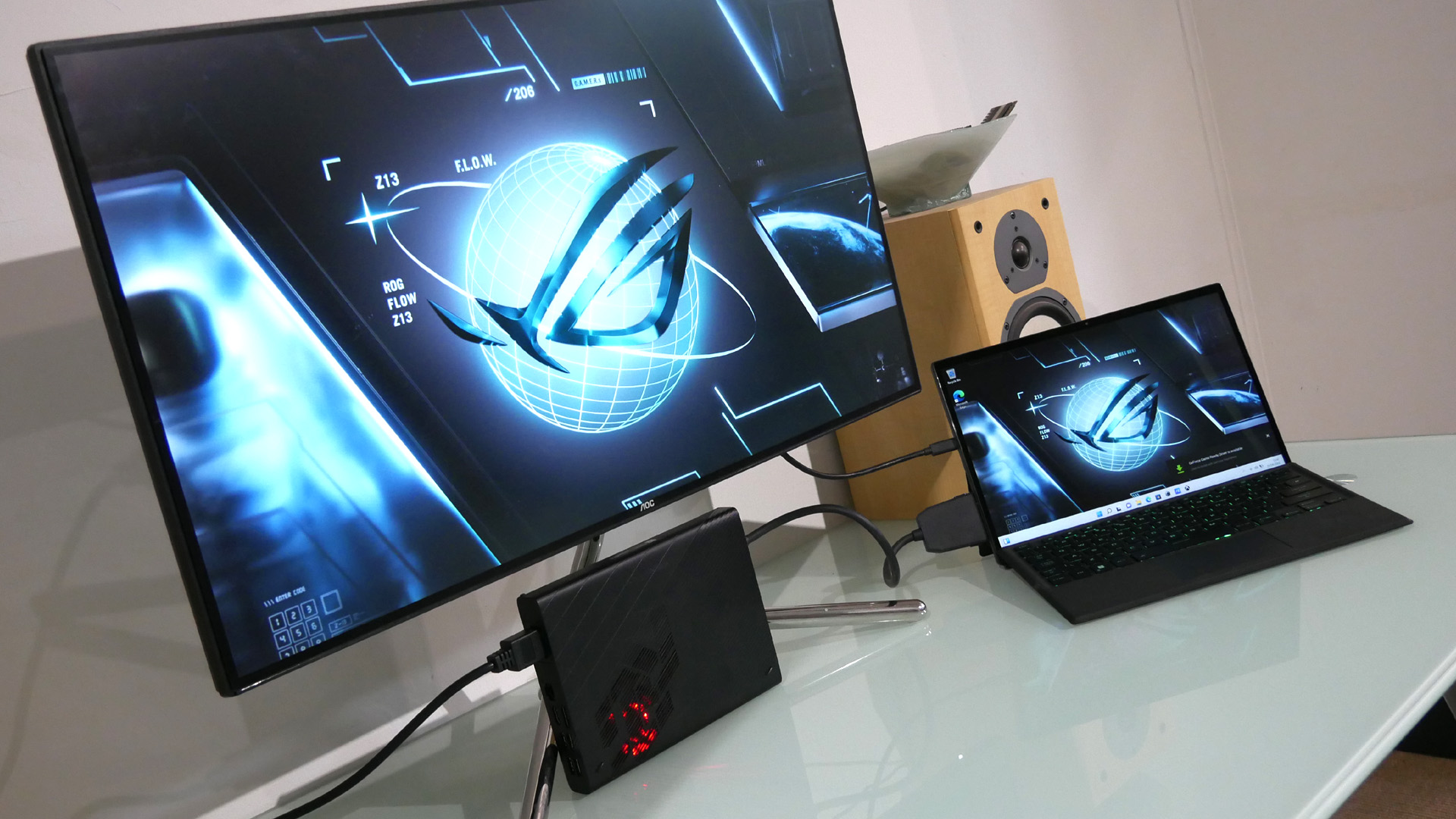
Asus ROG Flow Z13 review: performance
3DMark: Night Raid: 44,707; Fire Strike: 23,229; Time Spy: 10,420
Cinebench R20 Multi-core: 4,911 points
GeekBench 5: 1866 (single-core); 11,581 (multi-core)
PCMark 10 (Home Test): 7,665 points
Battery Life (1080p movie test): 7 hours and 20 minutes
Total War: Three Kingdoms: (1080p, Ultra): 82 fps; (1080p, Low): 260 fps
Metro Exodus (1080p, Ultra): 78 fps; (1080p, Low): 182 fps
Crystal Disk Mark: Read 3,358MB/s, write 3,225MB/s, 4K read 71MB/s, 4K write 333MB/s
4K x265 (HEVC) encode: 9fps
If that’s a whistle stop tour of the main features of this remarkable combo, how does it actually perform? Perhaps not surprisingly, we’ve seen better numbers from the components involved. The Intel Core i9-12900H is a real monster, but squeezed into this tablet, it’s actually slower in multi-threaded work loads than its ostensibly slower 12700H sibling when the latter is fitted to a full-sized 15-inch laptop.
As a for instance, in the Flow Z13 the 12900H cranks out 4911 points in Cinebench R20 while the 12700H is good for over 6400 points in a larger form factor. It’s a similar story in 4K HEVC video encoding. In the Flow Z13, the 12900H manages 9 frames per second while the 12700H in a larger laptop can do 12 frames per second. it's not that this tablet can't encode video, rather that you'll get better encoding performance out of this very CPU in a different chassis. Of course, with 16GB of RAM and what remains a very powerful CPU less demanding workflows like importing and editing images are a relative breeze.
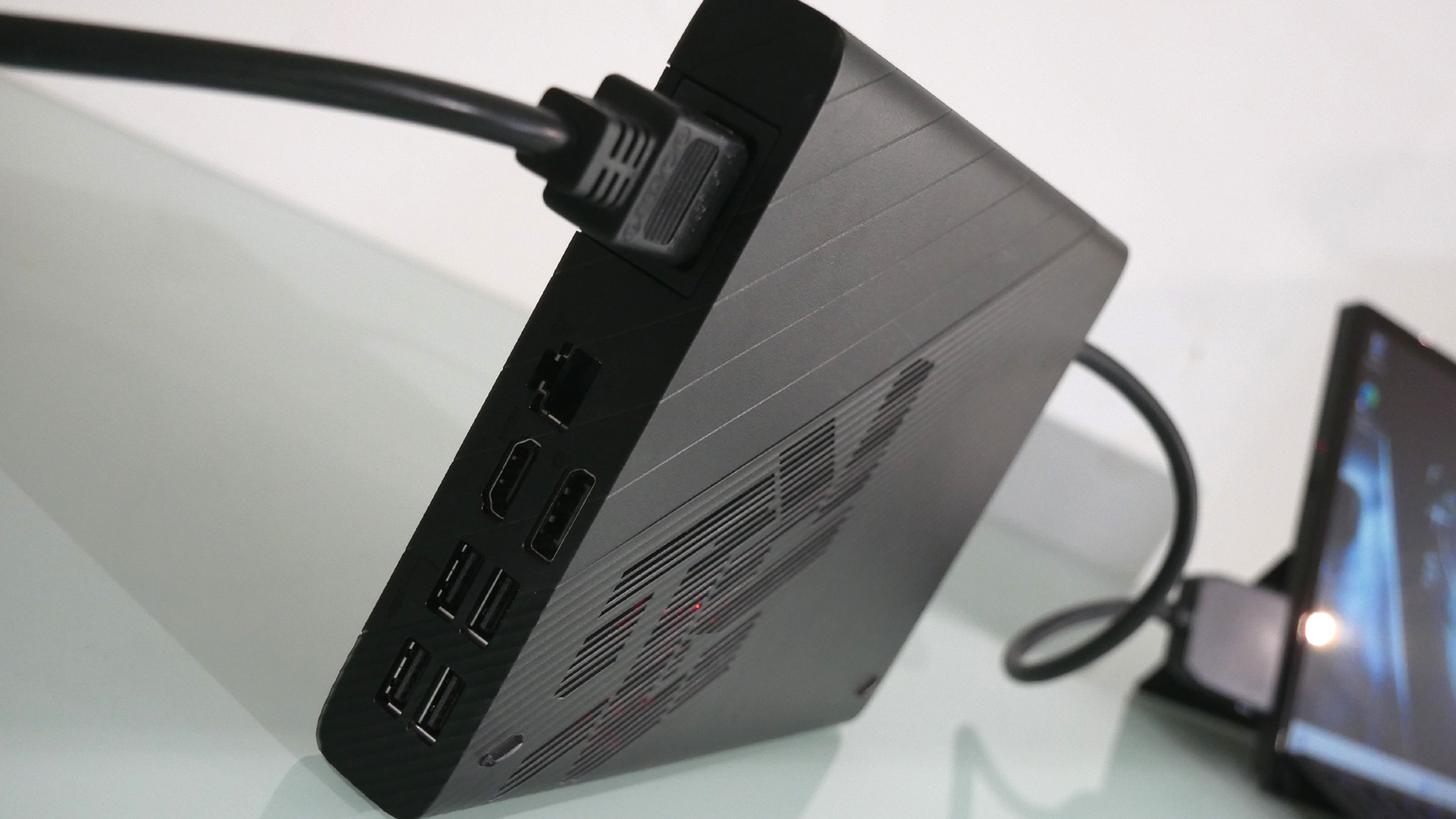
Take a peek at the actual clock speeds the 12900H runs in this tablet chassis and it’s easy enough to understand why. Intel rates this chip at up to 5GHz. But in our testing under heavy load, the performance cores run at just 2.4GHz to 2.6GHz, no doubt due to the thermal limitations of the tablet chassis. Even with those modest clockspeeds, the tablet’s fans kick in hard and early, making quite a racket. Given all that, it’s perhaps not surprising that battery life isn’t all that great. You can expect roughly seven and a half hours of video playback with the screen at around half brightness. Add any significant load to the CPU or GPU and that number will only be smaller.
Speaking of the GPU, what of graphics performance? That depends on how you look at it. On the one hand, the RTX 3080 mobile GPU definitely doesn’t give its best in this arrangement, whether that’s because of the low-clocking CPU or the limitations of the x8 PCIe Gen 3 interface. On the other, it’s still pretty quick, especially in a tablet context. Slick frame rates in any game at 1080p are a given. At 1440p, it’s pretty playable. Hooking the Flow Z14 up to a 4K display for gaming, however, wouldn’t be the best idea.
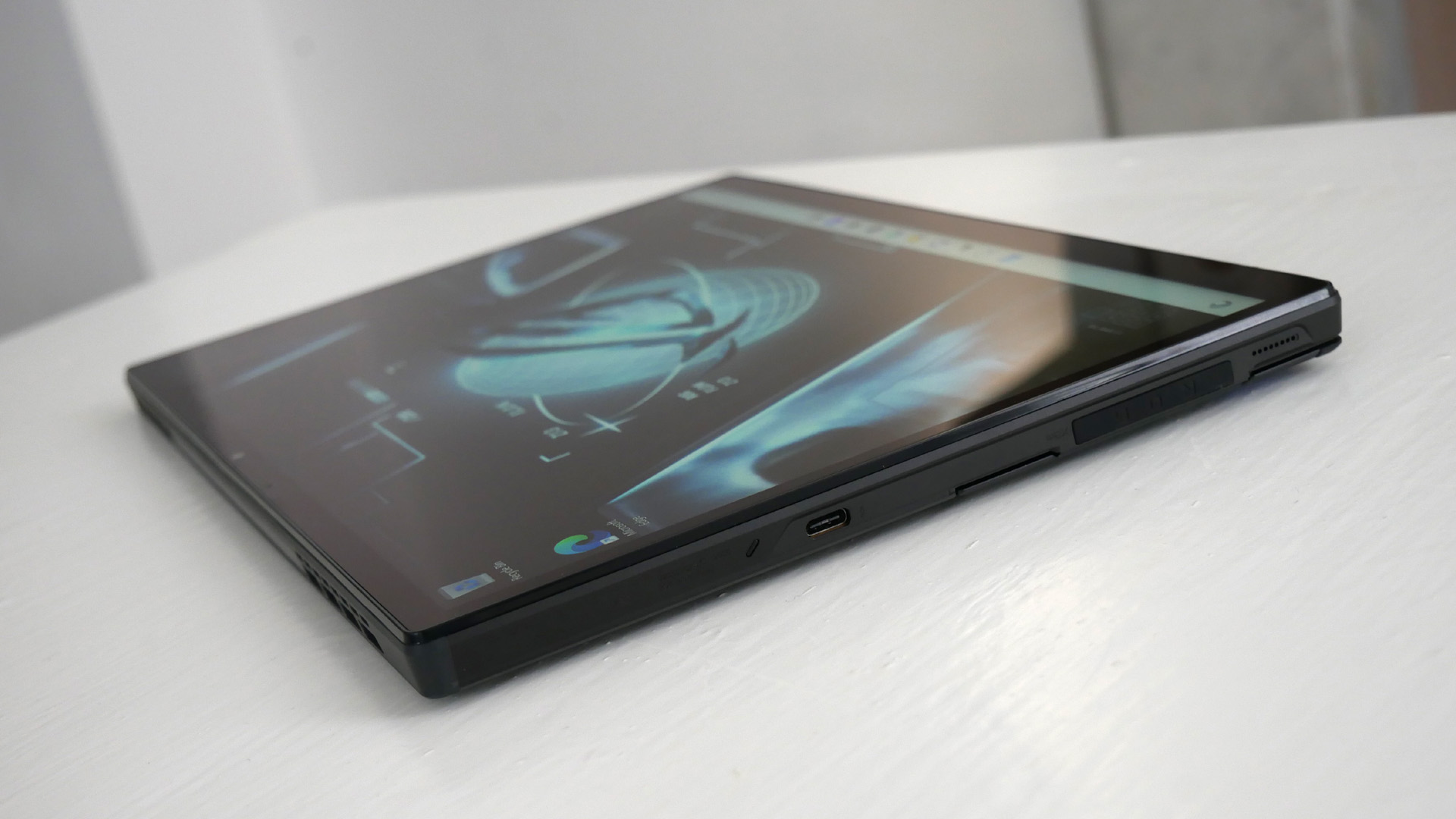
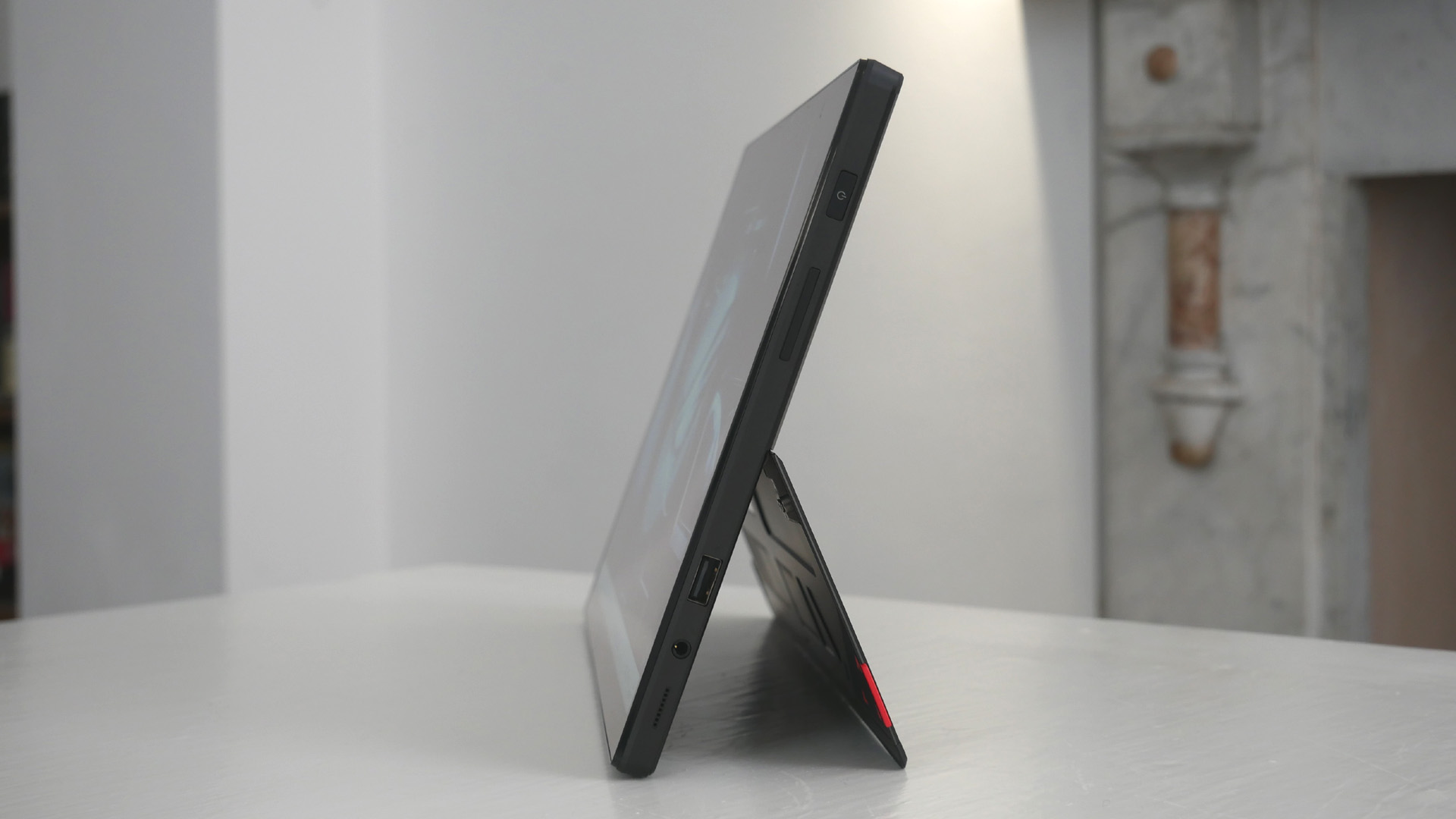
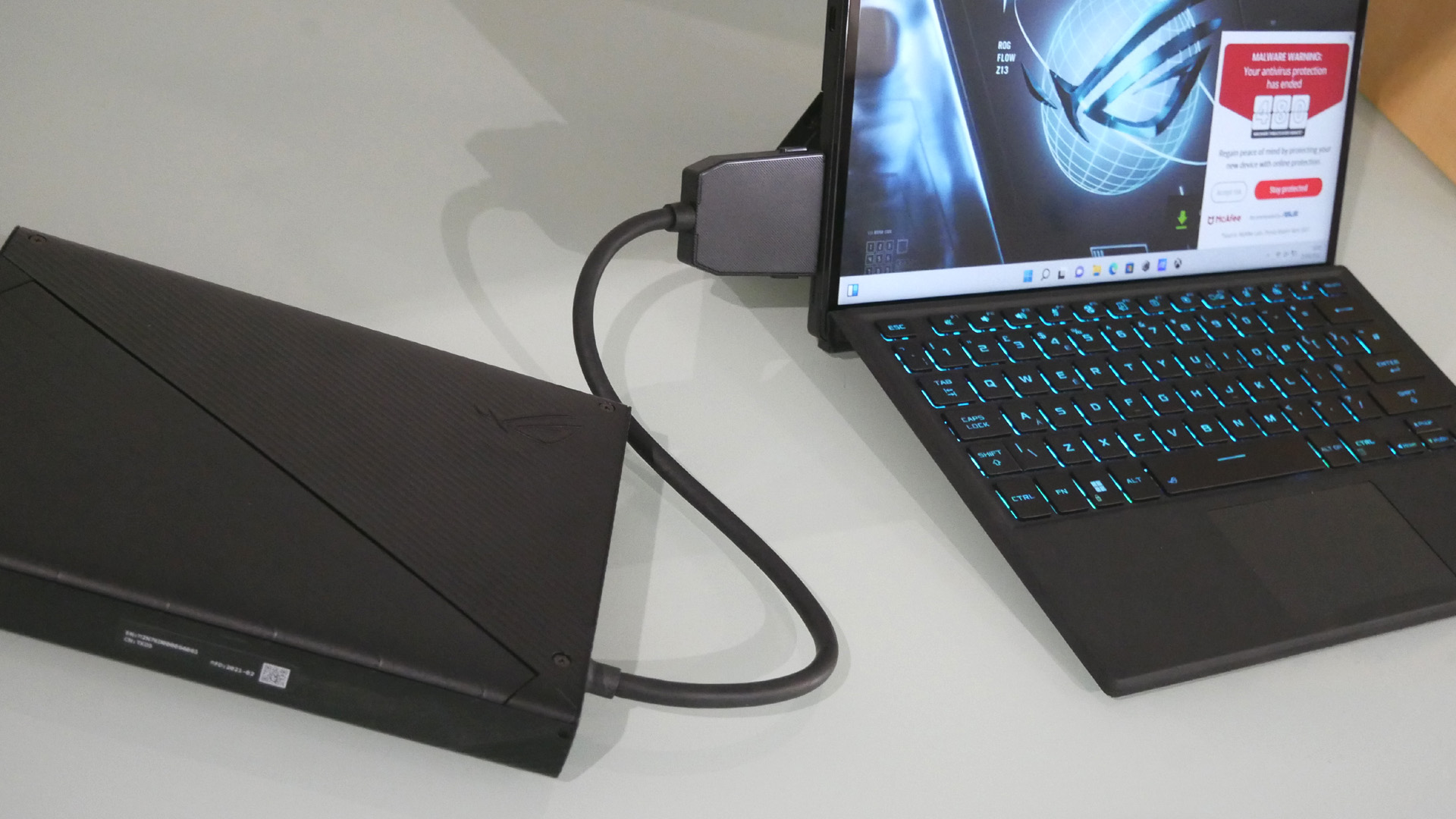
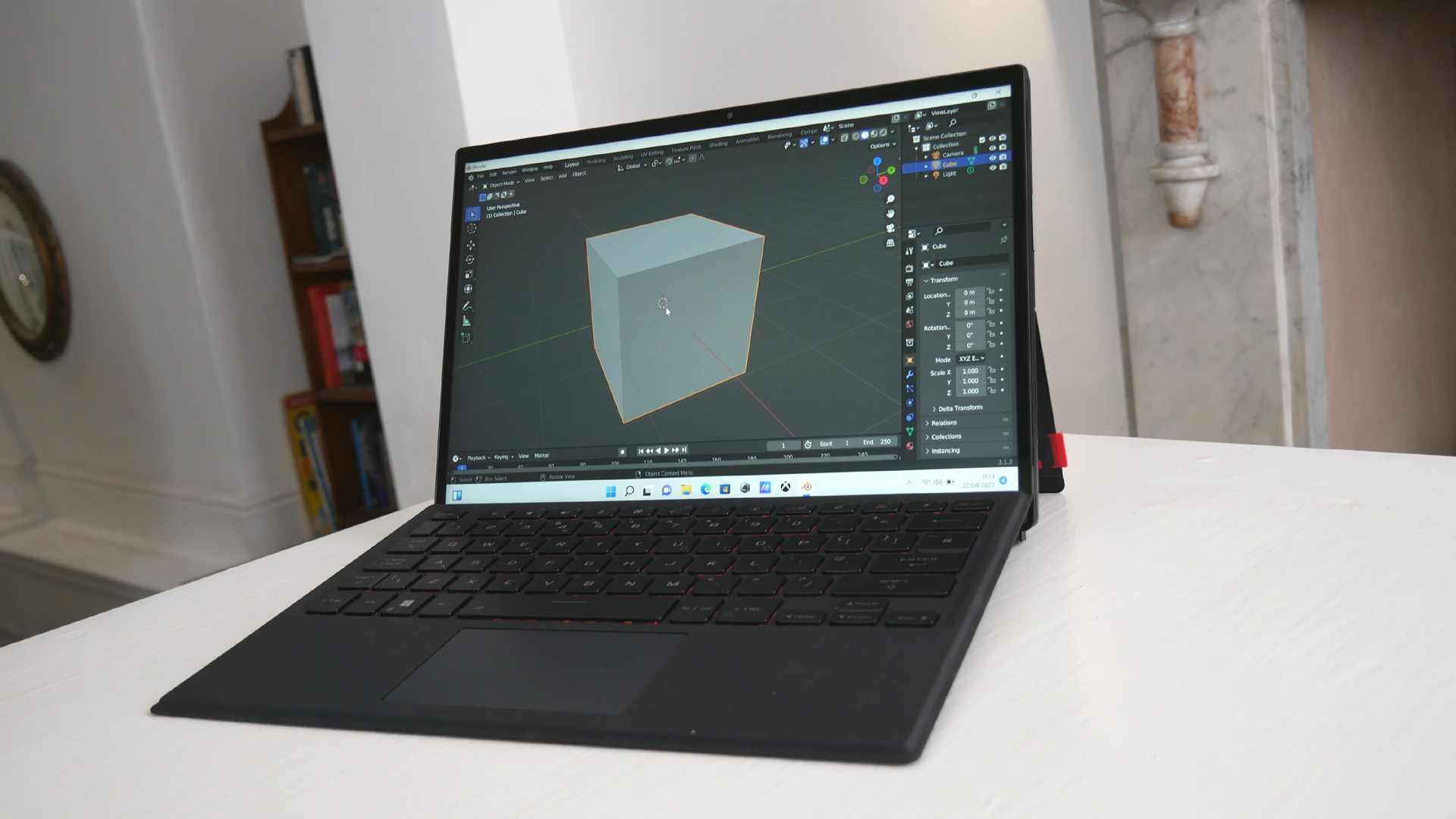
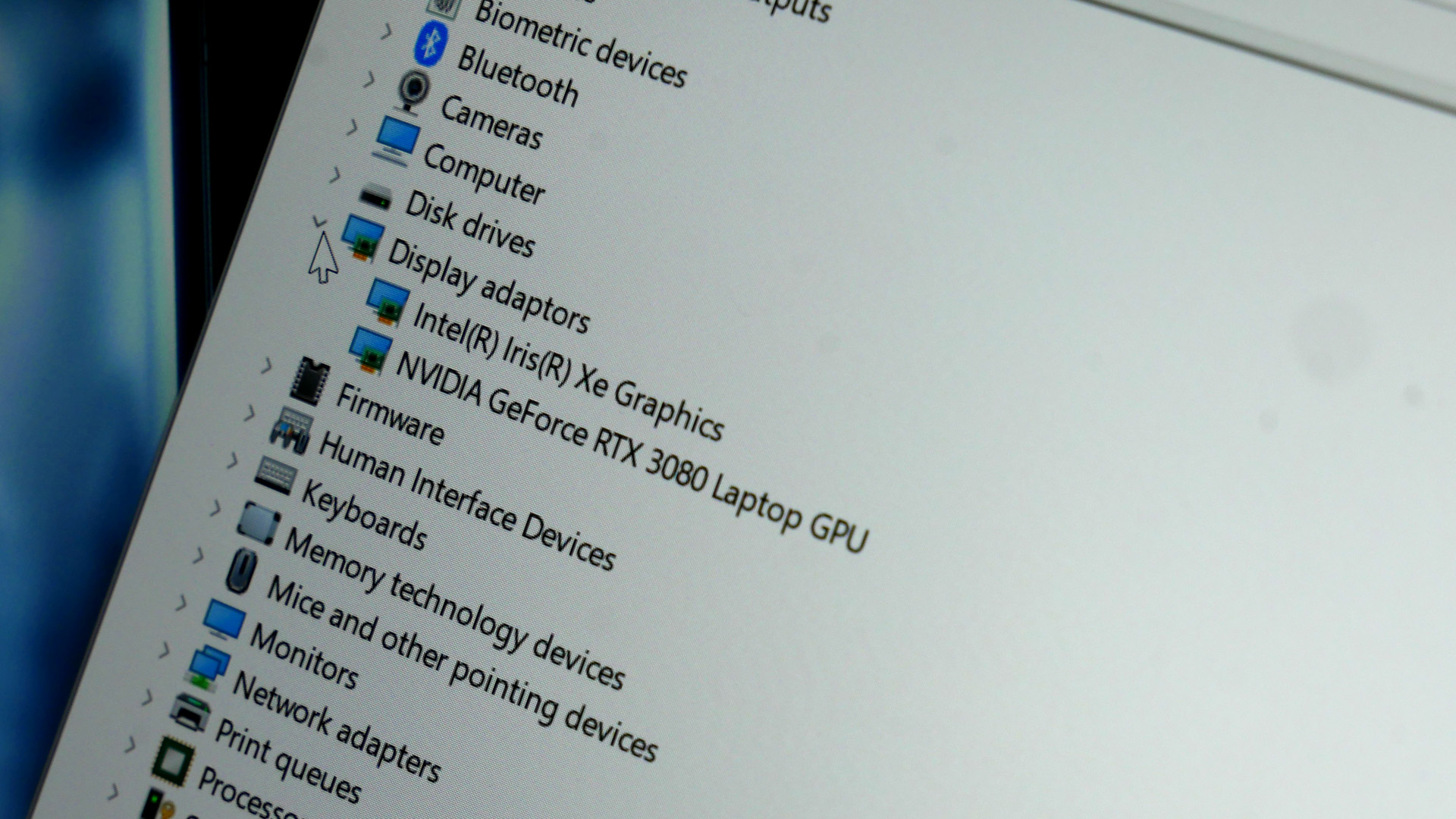
Incidentally, for gaming you very much would want to use an external display where possible. Obviously, the 13.4-inch screen is on the smaller side. But it also suffers from poor response. Asus rates it as 30ms, which is awfully slow and you can really see that in the form of blurriness and fuzziness in games and video.
For content creation workflows, the display does much better. There’s excellent pixel density, plenty of punch and decent colour accuracy, including Pantone validation and 85 percent coverage of the DCI-P3 colour space. That said, the 60Hz refresh is also something of a limitation when it comes to latency when using the touch interface. Oh, and for the record, the sound quality from the Flow’s Dolby Atmos capable stereo speakers is not impressive. It doesn’t even come close to the dynamic range and volume of an iPad Pro.
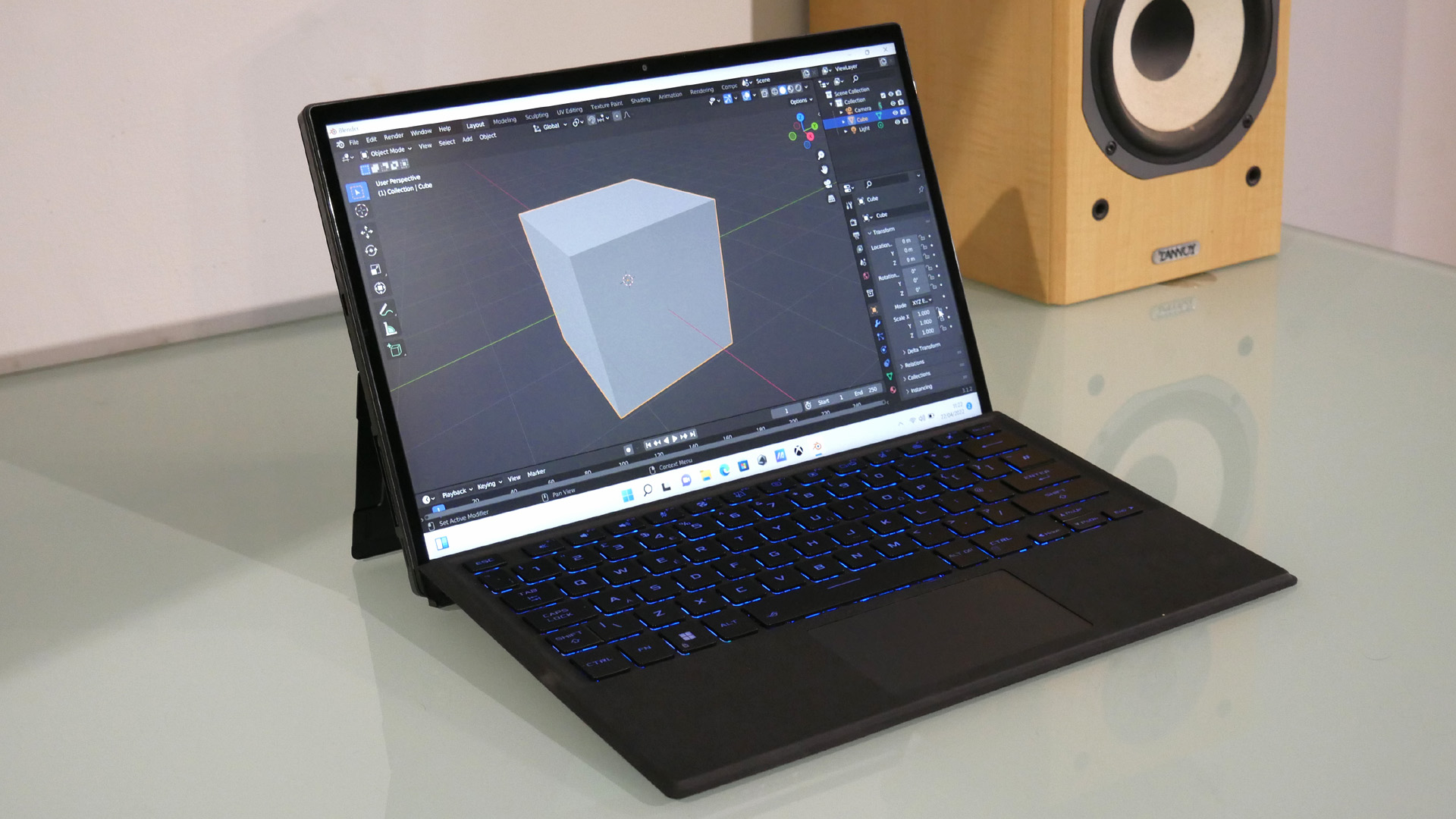
Should you buy the Asus ROG Flow Z13?
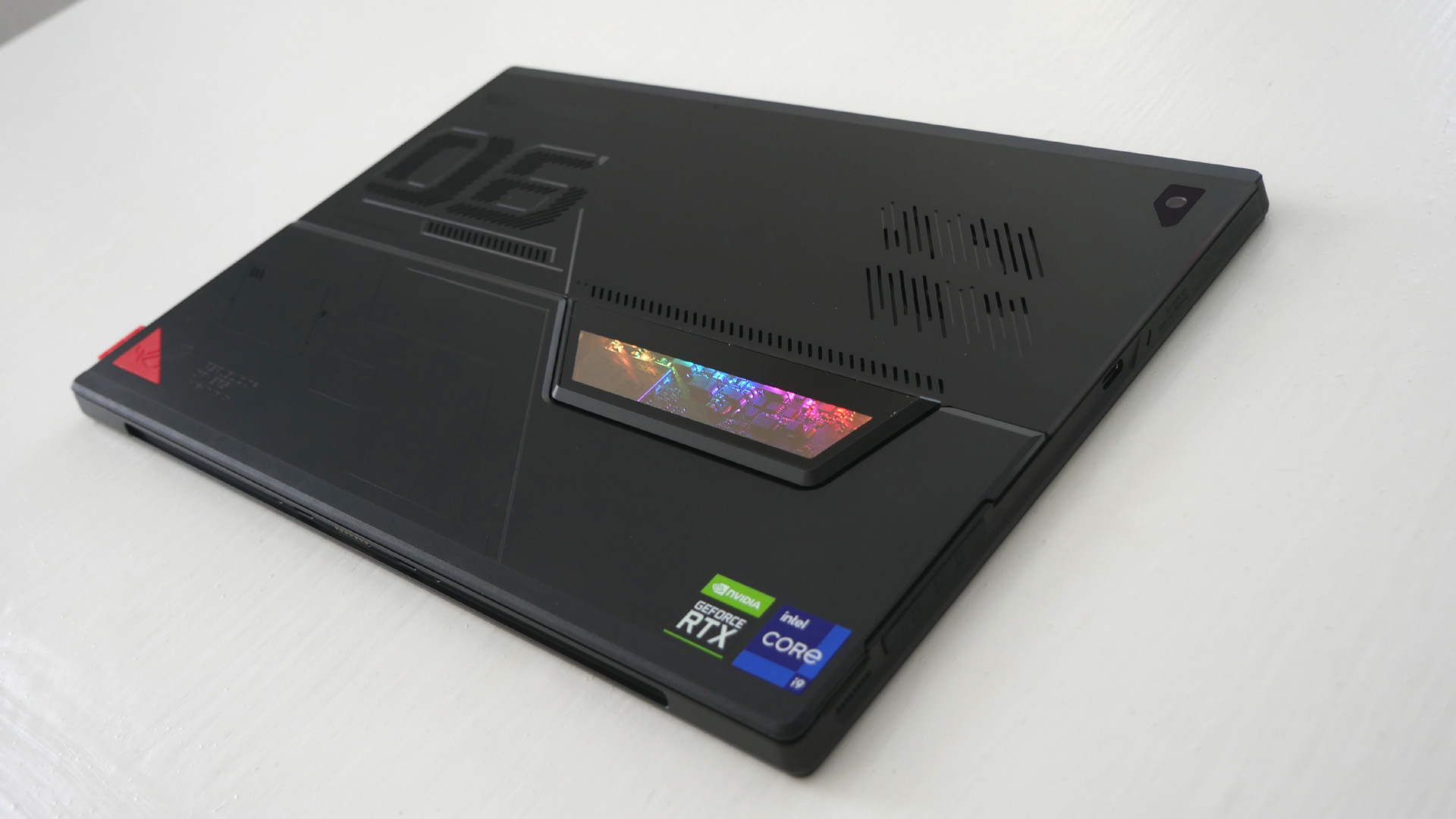
Compared to a conventional laptop with similar components, the Asus ROG Flow Z13 and ROG XG Mobile RTX 3080 combo are a tough sell when it comes to pure performance. The performance suffers thanks to the extreme form factor and convoluted engineering.
Indeed, it's a valid question as to how practical it would be to lug both the tablet and the graphics dock around. However, an alternative approach would be to leave the dock behind and fall back onto the secondary RTX 3050 Ti GPU on the move. For a certain niche of content creators, that could be a very compelling prospect. However, we do have concerns over the long-term reliability of certain aspects of the ROG XG Mobile interface.
Read more: The best monitors for gaming

Thank you for reading 5 articles this month* Join now for unlimited access
Enjoy your first month for just £1 / $1 / €1
*Read 5 free articles per month without a subscription

Join now for unlimited access
Try first month for just £1 / $1 / €1
out of 10
The Asus ROG Flow Z13 is an astonishing technical achievement, but is also undeniably flawed. Cramming an Intel Core i9-12900H 14-core CPU and RTX 3050 Ti graphics into a tablet PC is completely crazy, for both better and worse. It makes for a remarkably powerful tablet and yet the 12900H processor in particular simply can’t give its best in such a confined space. As for the ROG XG Mobile graphics dock and its Nvidia RTX 3080 graphics, it’s a similar story. As impressive as it is that the whole ensemble actually works, ergonomically it's a bit of a mess, the physical connection feels fragile and the performance isn’t on par with a good laptop with similar components, let alone a desktop. There's still real appeal here for certain very specific workflows, but it's squeezed into an uncomfortably narrow niche.

Jeremy has been writing about technology since the 90nm Netburst era (Google it!) and enjoys nothing more than a serious dissertation on the finer points of input lag and overshoot followed by a forensic examination of advanced lithography. Or maybe he just loves machines that go 'ping!'. He has written for a variety of publications, including TechRadar, The Independent, Digital Camera World, T3, PC Gamer, GamesRadar+.
